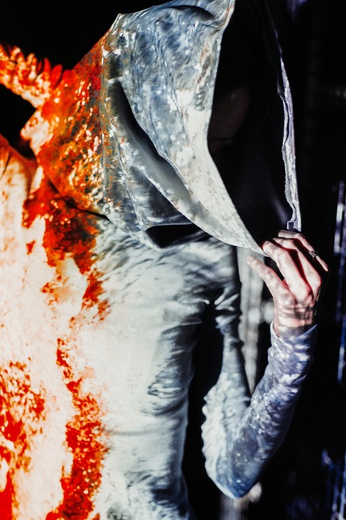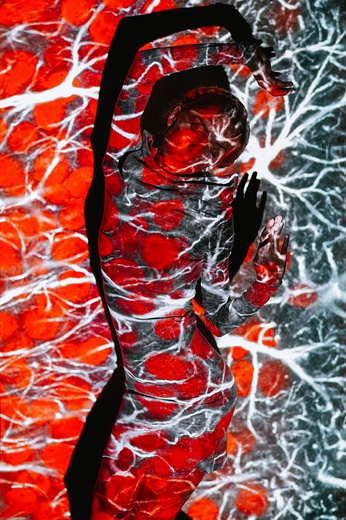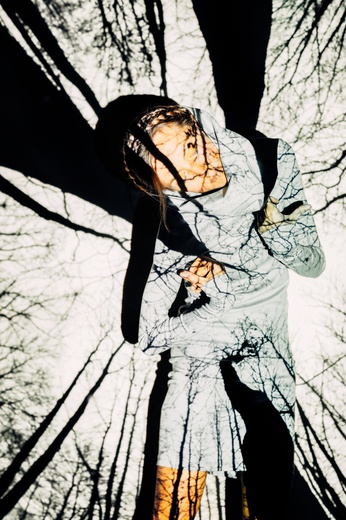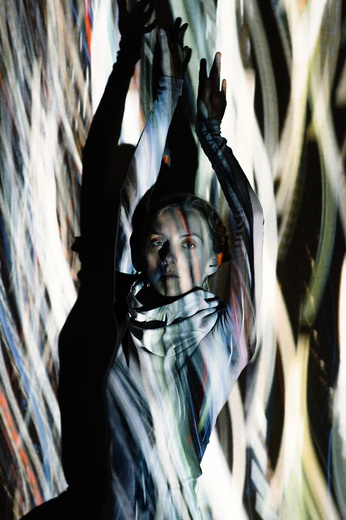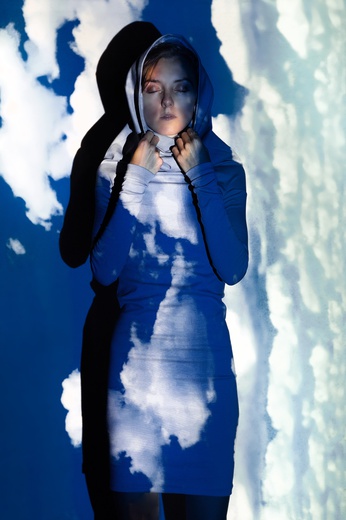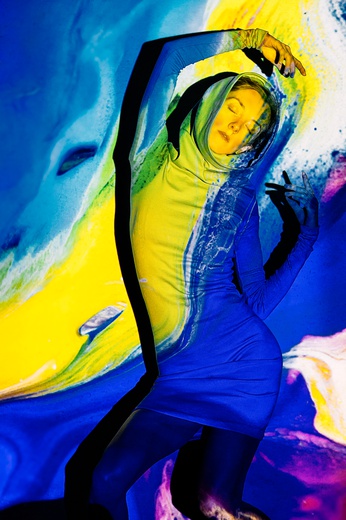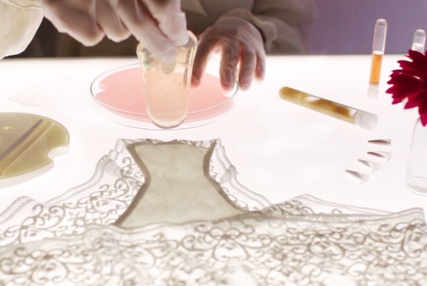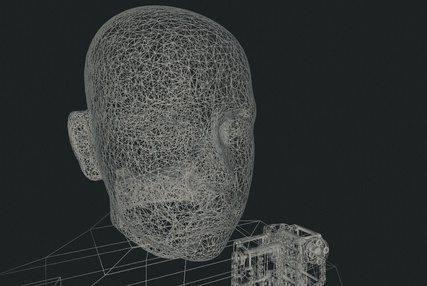Altering One's Body-Perception through E-Textiles and Haptic Metaphors, by Magic Lining
Magic Lining team translates their residency results at scientific level and inspires fashion-tech designers
Magic Lining is one of the teams awarded with by a STARTS RESIDENCIES project. Kristi Kuusk, artist designer, has collaborated with the tech project Magic Shoes (Ana Tajadura-Jiménez and Aleksander Valjamae) to develop an artwork about changing one’s self and body perception through the insight of the garment one wears.
The residency was about shifting fashion paradigms from external to internal, and proposing a novel haptic outfit. The work exploits the emerging e-textile materials for achieving it. The project alternates between scientific research and artistic ideation with prototyping. During the residency, Kristi spent 2 intense periods of 2 weeks in the host institution Universidad Carlos III de Madridin Spain and distributed time collaborating with Tallinn University Human-Computer-Interaction Groupas well as smart textile studio Spell.
The residency has contributed to both, the artistic and scientific parties greatly. From the artistic perspective, the concept developed much further by the knowledge and methods inserted by the scientists. The idealistic idea gathered some actual grounds. From the scientific project point of view, the artist brought in an alternative way of working, as well as new directions to explore further later on.
Discover the video produced at the end of the residency:
The results of the residency have been presented in various international exhibitions and conferences, talks as well as in one scientific paper published in an international scientific conference (EKSIG): "Magic Lining: Crafting Multidisciplinary Experiential Knowledge by Changing Wearer’s Body-Perception through Vibrotactile Clothing".
One other scientific paper co-authored by all project partners has been published in Frontiers, a high-impact international scientific conference: "Altering One's Body-Perception Through E-Textiles and Haptic Metaphors".
The team had also the good suprise to find their presentation of the STARTS Days (March 2019 in Paris), showcased in the list of 9 inspirational and creative fashion tech designers. See all women honoured by the article here.
Congratulations to the team!
DISCOVER MORE SUCCESSFUL RESIDENCIES
Magic Lining: Crafting Multidisciplinary Experiential Knowledge by Changing Wearer’s Body-Perception through Vibrotactile Clothing
Abstract: Our complex and rapidly changing world presents us with profound societal challenges, but also offers tremendous opportunities for new technology to respond to those challenges. Several recent EU initiatives have enabled participants from a diverse array of disciplines to engage in common spaces for developing solutions to existing challenges and to imagine possible futures. This includes collaborations between the arts and sciences, fields which have traditionally contributed very different forms of knowledge, methodology, results and measures of success. They also speak very different languages. Magic Lining is a collaborative project involving participants from the fields of e-textile design, neuroscience and human-computer interaction (HCI). Magic Lining combines the findings of their respective disciplines to develop a ‘vibrotactile’ garment utilising soft, interactive materials and is designed to alter the wearer’s perception of their own body. Here we explain the process of designing the first prototype garment—a dress that produces in its wearer the sensation that their body is made of some of other material (stone, air, etc.) and in turn elicits various perceptual and emotional responses (feeling strong, feeling calm, etc.). We reflect on the collaborative process, highlighting the multidisciplinary team’s experience in finding a common space and language for sharing cognitive and experiential knowledge. We share our insights into the various outcomes of the collaboration, giving also our views on the benefits and on potential improvements for this kind of process. Read the article
Altering One's Body-Perception Through E-Textiles and Haptic Metaphors
Abstract: Technologies change rapidly our perception of reality, moving from augmented to virtual to magical. While e-textiles are a key component in exergame or space suits, the transformative potential of the internal side of garments to create embodied experiences still remains largely unexplored. This paper is the result from an art-science collaborative project that combines recent neuroscience findings, body-centered design principles and 2D vibrotactile array-based fabrics to alter one's body perception. We describe an iterative design process intertwined with two user studies on the effects on body-perceptions and emotional responses of various vibration patterns within textile that were designed as spatial haptic metaphors. Our results show potential in considering materials (e.g., rocks) as sensations to design for body perceptions (e.g., being heavy, strong) and emotional responses. We discuss these results in terms of sensory effects on body perception and synergetic impact to research on embodiment in virtual environments, human-computer interaction, and e-textile design. The work brings a new perspective to the sensorial design of embodied experiences which is based on “material perception” and haptic metaphors, and highlights potential opportunities opened by haptic clothing to change body-perception. Read the article

